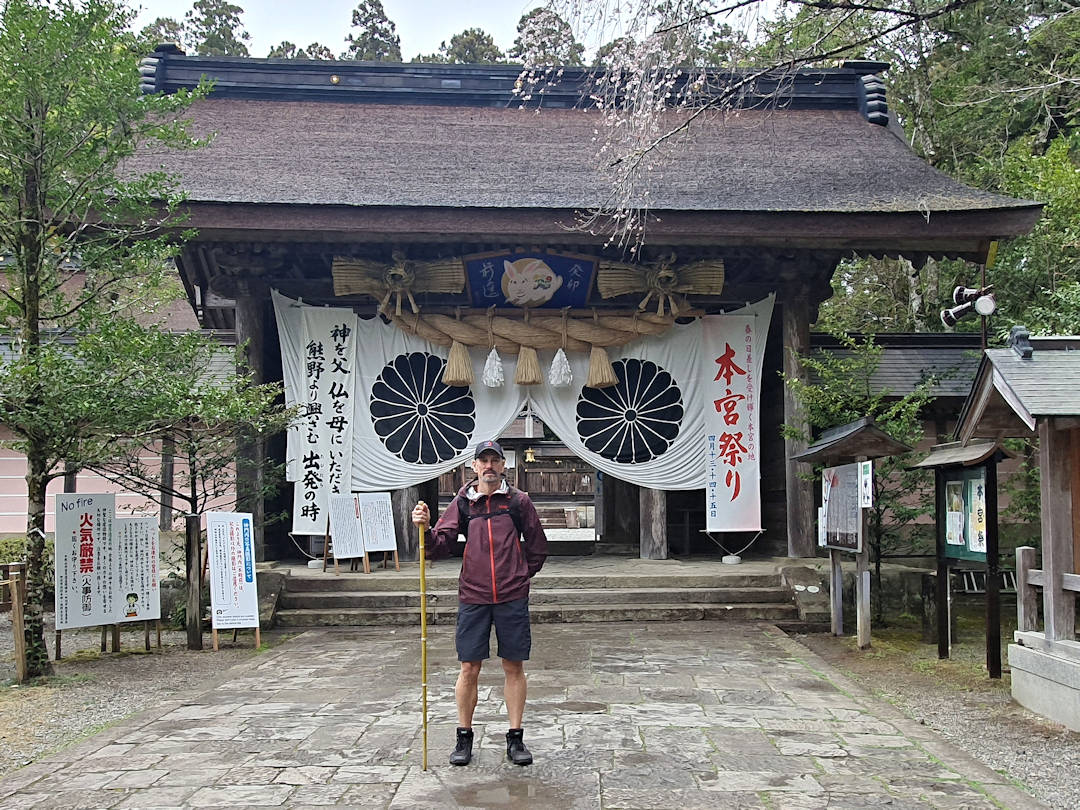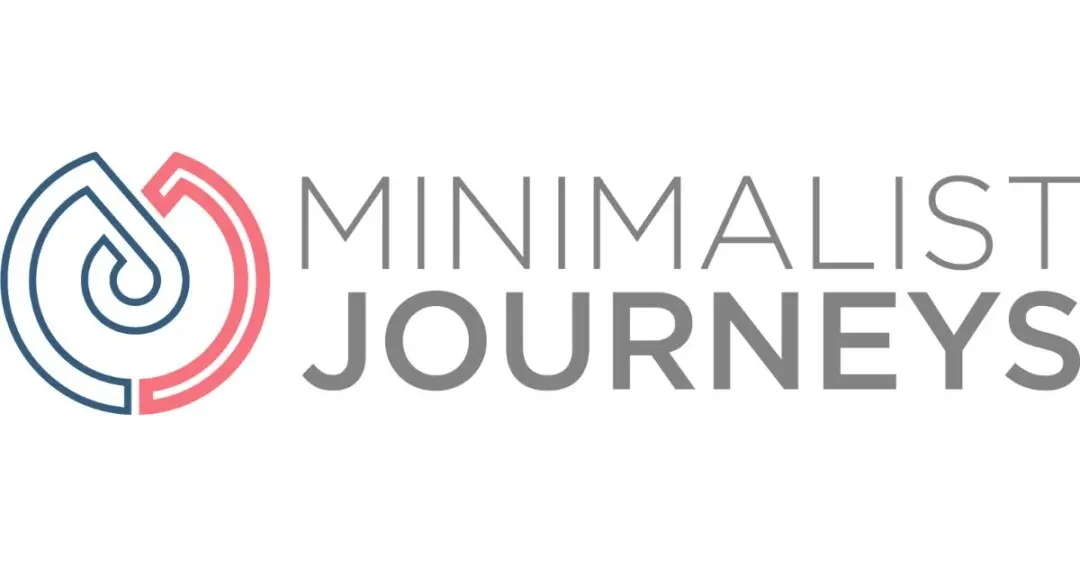This article may contain links to products and services we use and recommend. We may receive compensation when you click on links to those products. For more information, see our Disclosure Policy.
If you want to explore Japan’s natural beauty, the Kumano Kodo should be a must-do on your itinerary. In this article, we will break down the expenses associated with hiking the Nakahechi route of the Kumano Kodo – including transportation, accommodation, meals, and any additional fees or costs you might incur. Whether you are travelling on a budget or seeking a more luxurious experience, we’ve got you covered.
First things first: Key cost determinants for your Kumano Kodo hike
Everyone travels differently – some consider luxury to be essential for someone else. That said, how much your Kumano Kodo adventure will cost you will always depend on the following:
- Whether you organise the hike yourself or join an organised tour,
- How many days do you plan to hike;
- What accommodation you choose;
- Whether you buy a meal plan every day or self-cater (for parts of the hike or overall),
- How fast (and comfortable) do you want to travel to/from the Kumano Kodo and
- If you carry your luggage or need someone else to transport it for you,
We’ll talk about each in a bit more detail below.
Please note: While all prices in this article are actuals (quoted or paid), prices change over time. Please do your research during your travels.
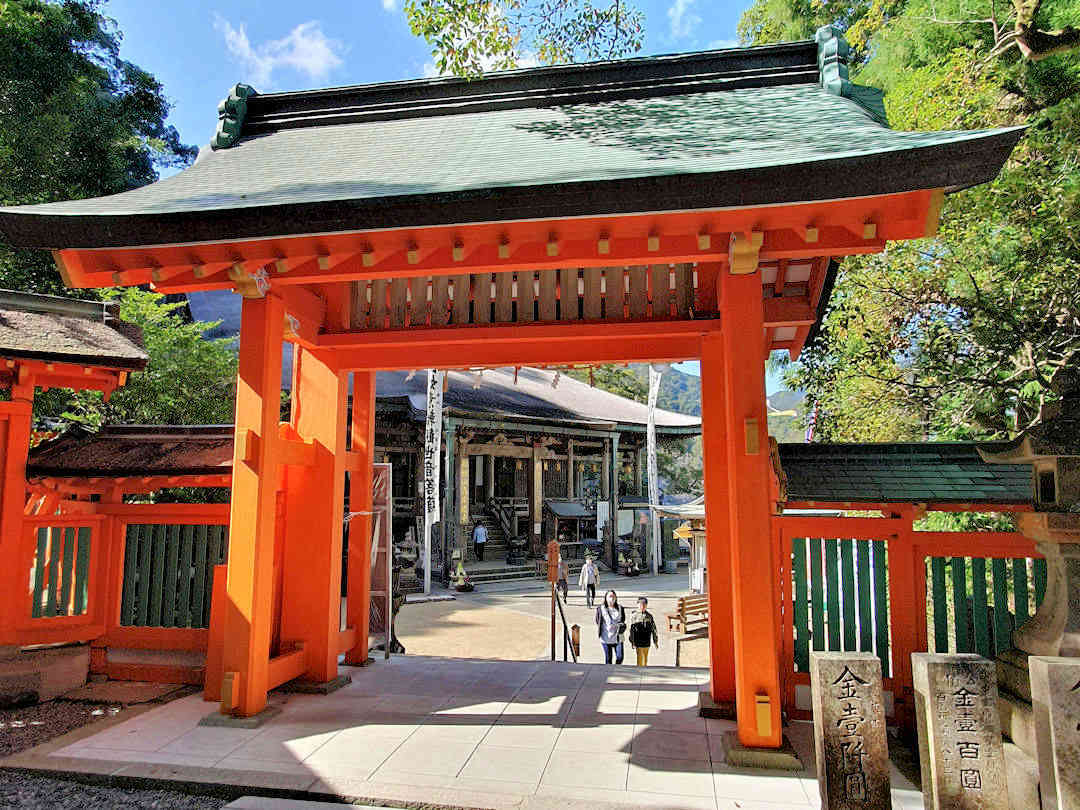
The UNESCO world heritage Kumano Kodo trails connect sacred Shinto and Buddhist sites
Hiking the Kumano Kodo: DIY or Organised Tour?
Pros/Cons of an Organised Tour
We organised our Kumano Kodo experience (almost) entirely by ourselves. But there are also organised (self-guided) tours you can join. And doing so definitely has advantages:
- You save time researching and organising your itinerary – a lifesaver when busy.
- Tour operators have local knowledge and speak the language, which is an excellent asset given that your accommodation hosts tend to speak only Japanese.
- Tour operators provide 24/7 support on the ground, so it can be fixed quickly if something goes wrong.
On the flip side:
- Organised Kumano Kodo hiking tours are more expensive (as is accommodation organised via Kumano Travel [Official website]) – after all, they have to pay for their overheads;
- An organised tour may include stuff you don’t want or need, and
- Half the fun of preparing for a trip is the research and the organisation (at least for us).
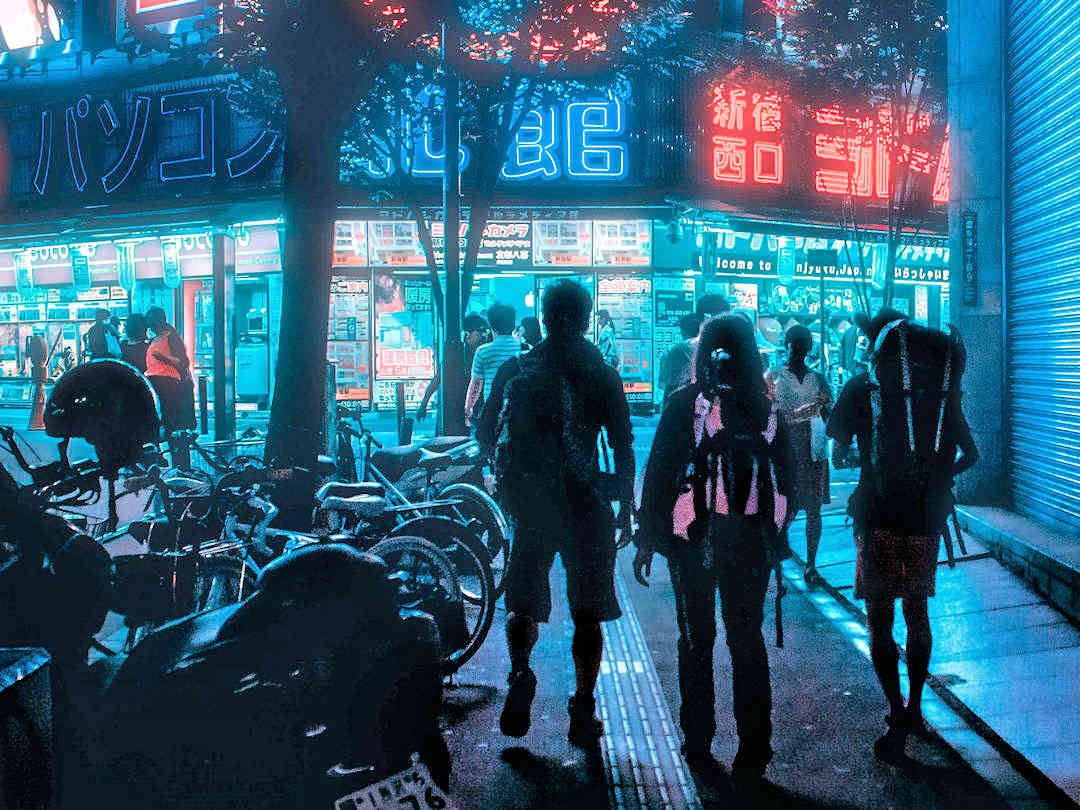
Organised Kumano Kodo hiking tours are more expensive and may include stuff you don’t want or need | Photo by Cerqueira on Unsplash
Typical Tour Group Costs
Kumano Travel offers several self-guided programs, ranging from JPY110,000 per person for a three-day, two-night tour to JPY200,000 per person for a six-day, five-night program.
Walking tour specialist RAW Travel’s self-guided Kumano Kodo itineraries range from AUD2,250 per person (approximately JPY240,000) for a 6-day/5-night Nakahechi program to AUD4,495 (around JPY480,000) for a 12-day/11-night program comprising the full Nakahechi and Kohechi routes (including two nights at a Buddhist Temple in Koyasan—which is not cheap, but we highly recommend it).
Based on the above, an organised Kumano Kodo hiking tour could cost between JPY40,000 and JPY55,000 per person per night (including accommodation, most meals, and daily luggage transfers).
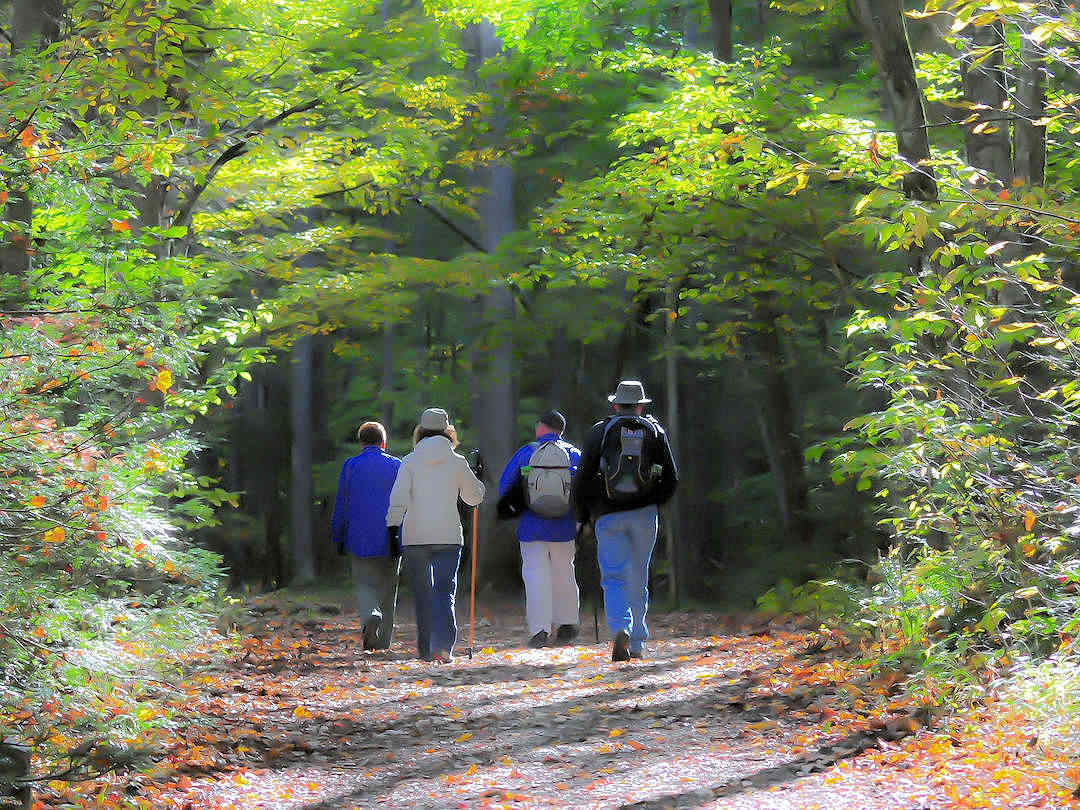
Budget between JPY29,000 and JPY42,000 per person per night for an organised Kumano Kodo trek | Photo by Mickey Estes on Pixabay
DIY Costs
For comparison, our six-day Kumano Kodo adventure cost us JPY85,815 (an average of around JPY7,150 per person per night).
This included
- four nights’ accommodation in traditional Japanese inns
- two nights’ accommodation in a hostel (all private rooms)
- all food and beverages
- luggage storage (one bag/one week)
- luggage forwarding (one bag/same day), as well as
- public bus transportation on the Kumano Kodo.
The above does not include the train to Kii-Tanabe Station [Google Maps location] or from Kii-Katsuura Station [Google Maps location].
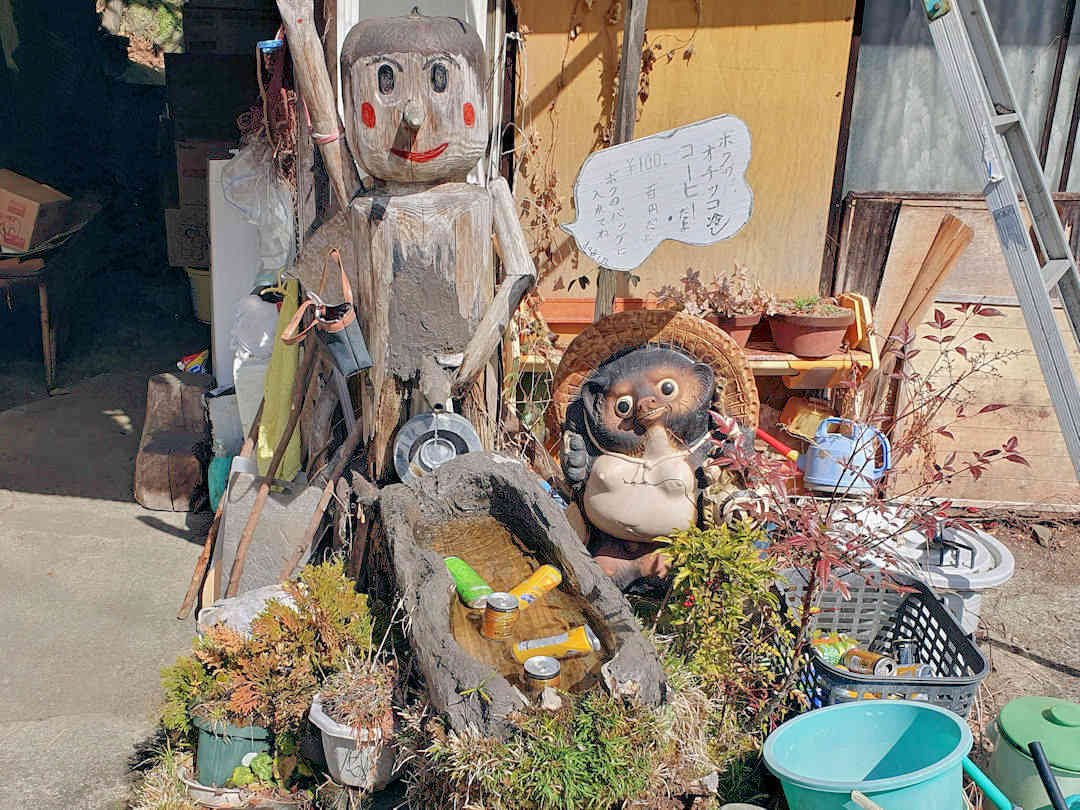
Cool drinks on a hot day - a win/win for pilgrims and locals along the Kumano Kodo
How much do you budget for accommodation on the Kumano Kodo?
The most common types of accommodation on the Kumano Kodo – Nakahechi Route are traditional Japanese inns (Minshukus and Ryokans):
- If you want a bit more luxury (and are willing to pay more), stay in a Ryokan.
- If you travel on a budget but are still keen to experience the warm hospitality of a family-run guesthouse, choose a Minshuku.
Excluding the meal plan in Koguchi, our six-night Kumano Kodo accommodation cost us JPY45,950, averaging around JPY7,660 per room per night. Only our accommodation in Asso required cash; all others accepted card payments (in advance or on-site).
| Name | Property Features | Location | JPY Cost Per Night | Book Now |
|---|---|---|---|---|
| Guest Cafe Kuchikumano | 1-star guesthouse with 5-star service. Highly recommended as a great starting accommodation for your pilgrimage. Two adjoining rooms with a single futon each Shared bathroom and toilet Shared kitchen | Kii-Tanabe | 4500 | Book Now |
| Minshuku Nakano | Twin room with two single futons Shared bathrooms and toilets (separated by gender) Shared kitchen and lounge area | Chikatsuyu | 9800 | Book Now |
| J-Hoppers Kumano Guesthouse | Twin room with two single futons Shared toilets Private Onsens (two indoor, one outdoor) Shared kitchen and lounge area Rice for dinner and rice porridge for breakfast | Yunomine Onsen | 7625 | Book Now |
| Koguchi Shizen-no-Ie | (Huge) Twin room with two single futons; Shared toilets (separated by gender) Public Onsens (separated by gender) Meal plan: Dinner, breakfast and bento box lunch (JPY9,000) | Koguchi | 9800 | Book Now |
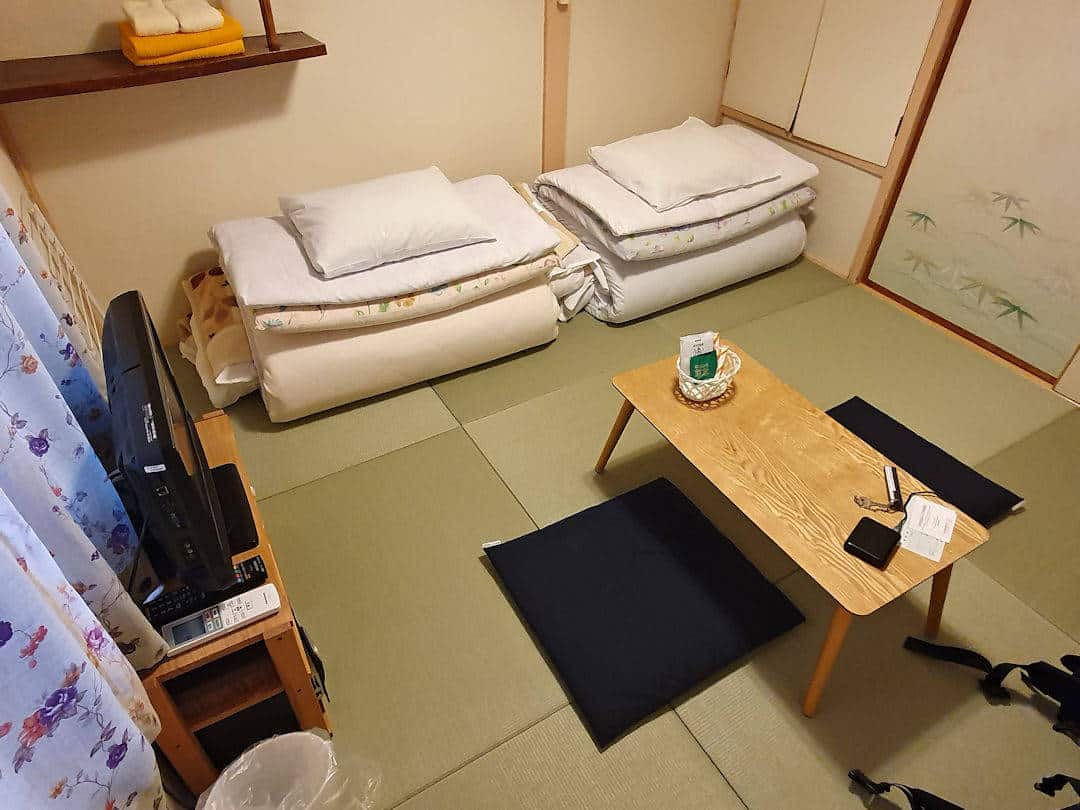
Your bedroom in a Japanese guesthouse may not be large but has everything you really need
What should the budget be for food and beverages on the Kumano Kodo?
Researching our route in advance, we knew
- which accommodation offered the opportunity to self-cater and which offered a meal plan, and
- where the shops and local restaurants were along the route – there aren’t many, so you do need to plan accordingly.
We stopped at the following shops, cafes and restaurants on the Kumano Kodo – Nakahechi route:
| Name | Location | Meals | Payment Method | Cost per couple (JPY) | Comments |
|---|---|---|---|---|---|
| Gyomu Super Asso-ekimae Supermarket | Asso | Dinner (Day 0); Breakfast, lunch, snacks (Day 1) | Credit Card | 1,476 | |
| Coffee Keyaki Cafe | Takahara | Morning tea (Day 1) | Cash | 970 | Great mid-hike stop with home-made pastries, nice coffee and amazing views |
| Tororoya Restaurant | Chikatsuyu | Dinner (Day 1) | Credit Card | 3,180 | Delicious set dinner |
| A Coop Supermarket | Chikatsuyu | Breakfast, lunch (Day 2) | Credit Card | 1,047 | |
| V Shop Yunomine | Yunomine | Snacks, dinner (Days 2/3) | Cash | 2,660 | |
| Miyazushi Hongu Restaurant | Hongū | Lunch (Day 3) | Cash | 2,000 | Delicious set lunch |
| Yamazaki Y Shop Shimoji | Ukegawa | Lunch, snacks (Day 4) | Cash | 1,202 | |
| Koguchi shizen-no-ie | Koguchi | Snacks (Day 5) | Cash | 700 | Dinner (Day 4) and breakfast/ lunch box (Day 5) were provided by our accommodation (JPY9,000) |
| Nachi Kurotei Mimuro Shop | Nachisan | Ice cream (Day 5) | Cash | 600 | |
| Nachi Kurotei Mimuro Shop | Kii-Katsuura | Dinner (Day 5) | Cash | 3,795 | Delicious a la carte dinner |
| Olive Cafe | Kii-Katsuura | Breakfast (Day 6) | Cash | 1,000 | Set breakfast |
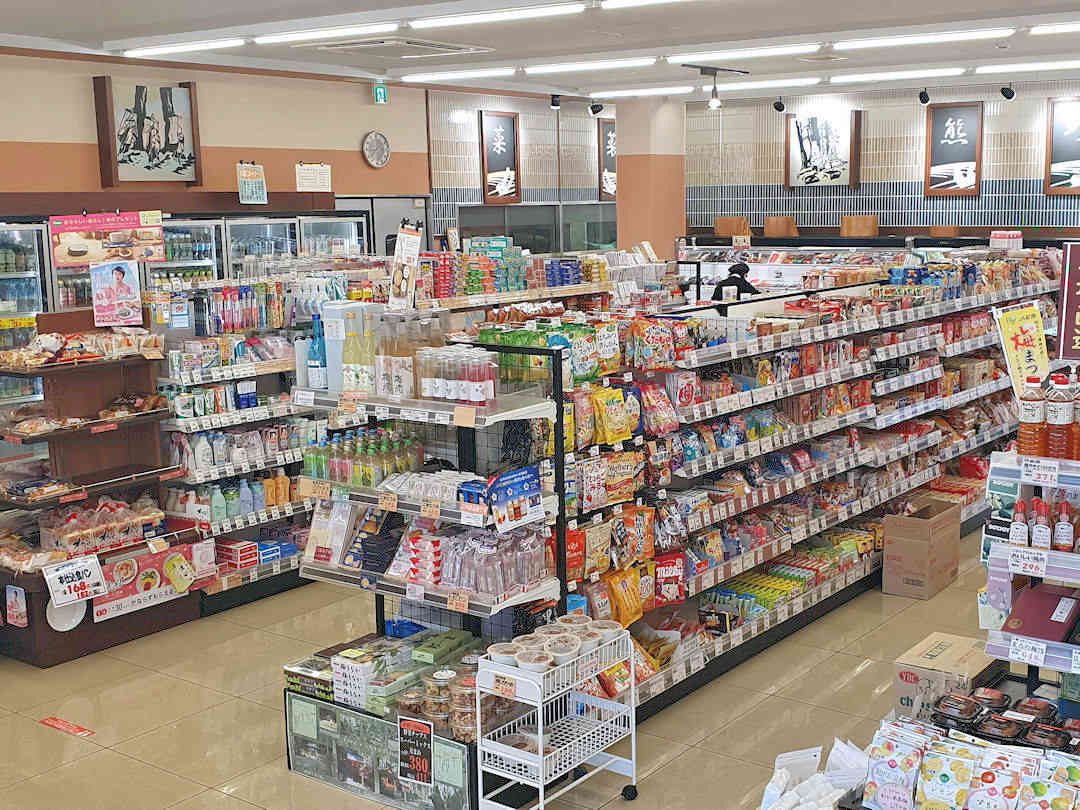
Supermarkets and convenience stores are great places to stock up on food before and during your hike
Our main staples on the hike were rice balls (onigiri—the best invention ever), pastries (especially melon pan), biscuits, muesli bars, apples, and bananas. Eggs and sweet potatoes supplemented our day 3 lunch, which a lovely Japanese family gave us while waiting for the bus in Yunomine. They were freshly boiled in the hot spring.
Whenever we did eat out, we tried to get the set menu, which was always substantial and cost (significantly) less than ordering a la carte. That said, we found food in Japan – at the supermarket, convenience store or restaurant – generally way more affordable than in Australia or New Zealand.
Including the meal plan in Koguchi, we spent around JPY27,630 in total on food and beverages during our Kumano Kodo hike, averaging around JPY2,300 per person per night.
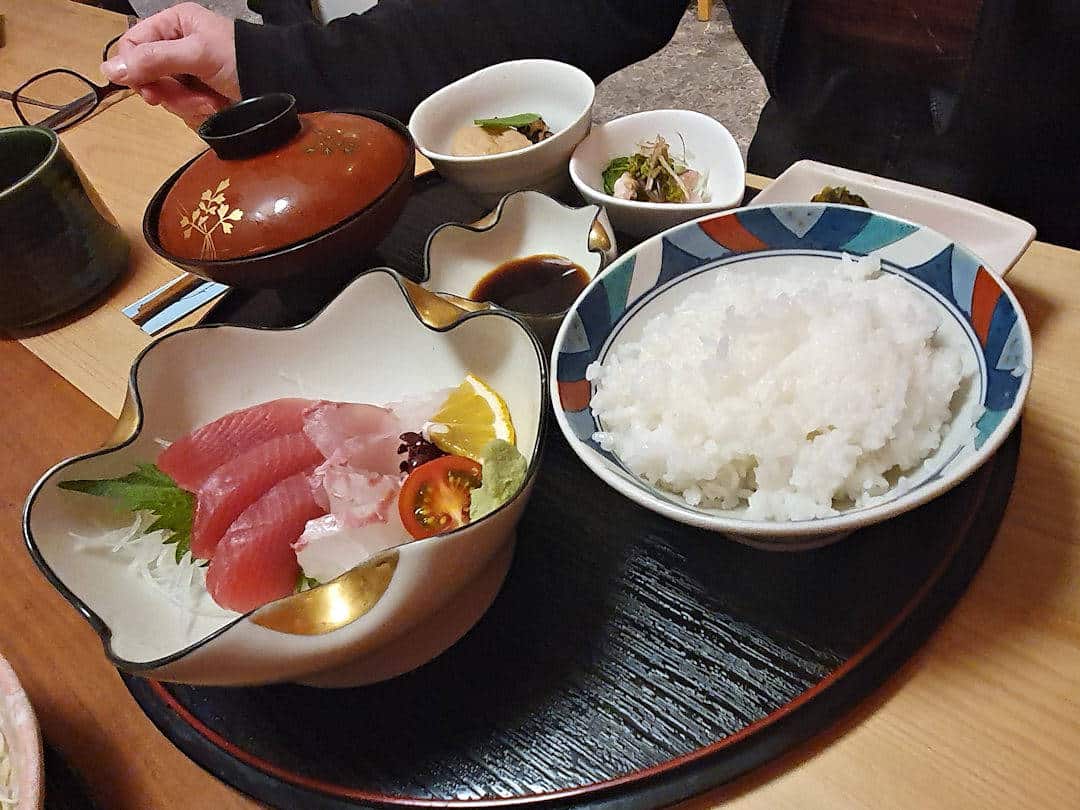
This delicious and filling sushi set meal at Miyazushi Hongu cost JPY1,000 - much less than ordering a la carte
How much do you budget for transportation to/from/along the Kumano Kodo?
Like many hiking the Kumano Kodo/Nakahechi route, we arrived in Kii-Tanabe (by train from Osaka). After our hike, we travelled from Kii-Katsuura to Koyasan (by train and bus).
Train ticket costs
The JR Kuroshio Limited Express train from Shin-Osaka to Kii-Tanabe costs JPY6,010pp, and JPY7,660pp from Kii-Katsuura to Shin-Osaka (reserved seat in both cases as seat reservation for the train is mandatory). Tickets for the JR trains can be bought at the ticket machines at the train stations. Bring enough cash, though, as the machines do not accept foreign credit/debit cards.
If you purchase the JR Pass, the cost of the train to/from (most of) the Kumano Kodo access points will be covered by the pass (as long as you take JR-operated trains).

Non-reserved seats are all you need to travel on the JR Kuroshio Limited Express train - the train is never full
Bus fares
The cost for local buses between Kii-Tanabe/Kii-Katsuura/Shingū and the Kumano Sanzan are as follows (per person):
- JPY630 (Kii-Katsuura to/from Kumano Nachi Taisha)
- JPY1,560 (Shingū to/from Kumano Hongū Taisha)
- JPY2,100 (Kii-Tanabe to/from Kumano Hongū Taisha).
Kumano Hayatama Taisha is in walking distance from Shingū train station (~1.5 kilometres/15 minutes), but if you wanted to save your energy, the super-short bus ride would cost you JPY200.
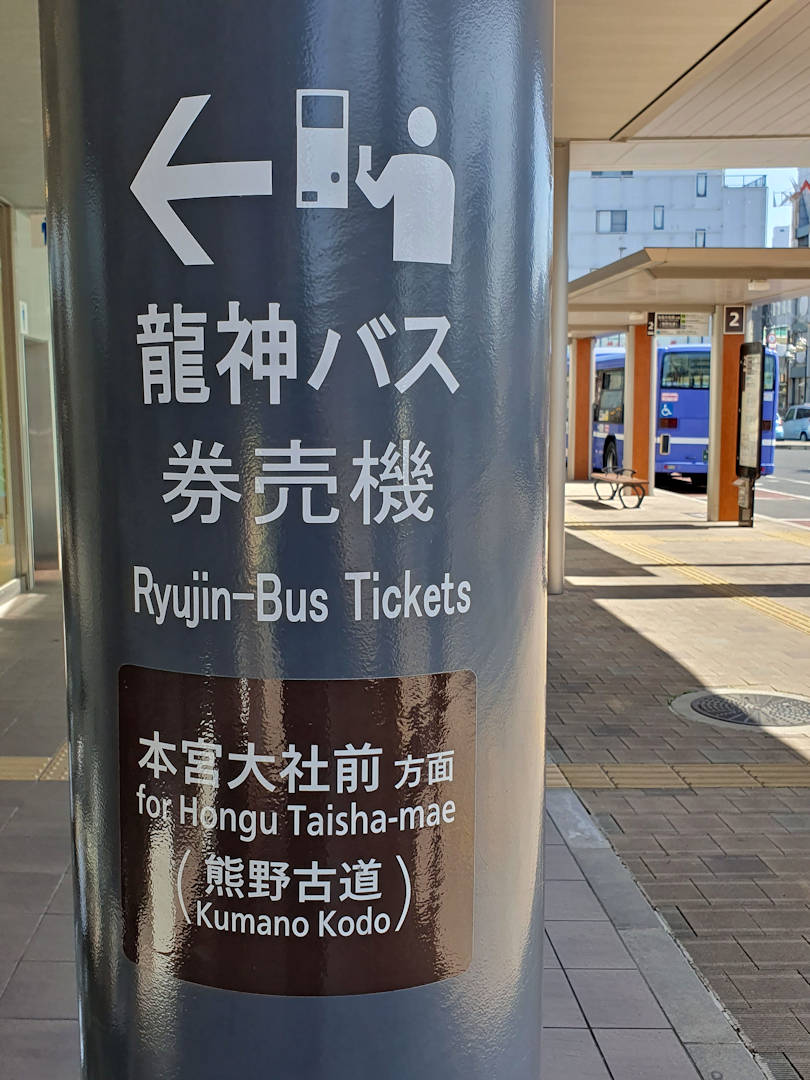
Buses are the predominant mode of transportation in the Kii Mountains
Other typical bus route costs along the Nakahechi are (per person):
- Kii-Tanabe to Takijiri JPY970
- Kii-Tanabe to Hosshinmon-oji JPY2,340-2,570
- Chikatsuyu-oji to Doyukawa-bashi JPY420
- Yunomine Onsen to Doyukawa-bashi JPY670
- Yunomine Onsen to Hosshinmon-oji JPY530-800
- Yunomine Onsen to Kumano Hongū Taisha JPY310
- Yunomine Onsen to Ukegawa JPY340.
Bus rides can only be paid in cash. As you enter the bus, pick a ticket from the dispenser. When you get off, pay the fare based on your ticket number (as per the display above the bus driver). If you don’t have the correct amount, there is a change machine next to the bus driver. Change first, and then pay the correct amount.
We averaged JPY3,580 per person for seven bus rides over six days, and we averaged JPY600 per person per night.

Bus rides along the Kumano Kodo need to be paid in cash
What does luggage storage and/or forwarding cost on the Kumano Kodo?
You can hike the Kumano Kodo – Nakahechi Route point-to-point (changing your accommodation each night) or base yourself in a central location, and take buses to/from the starting/end points of each stage. If you base yourself in one location, you can leave your luggage at your accommodation and hike with a day pack.
If you hike point-to-point, you’d want to reduce the amount you carry to the absolute minimum (whilst still having enough gear, food and water to hike safely). That’s where luggage storage and/or luggage forwarding can come in handy:
- Luggage storage: While coin lockers are almost everywhere in Japan, we do not recommend storing your luggage there (it’s way too costly, and they do have a time limit). Instead, if you want to store excess luggage, look for a storage operator, like Daikoku near Shin-Imamiya Station in Osaka. A medium-sized bag cost us JPY80 per day.
- Luggage forwarding: If you prefer to carry a daypack with food and water but would like to have your main luggage available at your accommodation each night, same-day luggage forwarding is available along the Nakahechi route. The best is to ask your accommodations (or Kumano Travel) to organise this for you. We paid JPY2,500 for one 45-litre travel pack from Koguchi to Kii-Katsuura (organised through our accommodation in Koguchi on the evening of our arrival).

Same-day luggage forwarding is available along the Nakahechi and Kohechi routes of the Kumano Kodo
What other expenses do you expect on the Kumano Kodo?
Given you are paying your respects at Shinto shrines (and Buddhist Temples), consider some cash for donations.
How much cash should you bring when hiking in Kumano Kodo?
Cash is still King in Japan, especially in rural areas. So what percentage of your budget will be cash (vs credit/debit card)?
We prefer to pay with a credit card because it offers interbank exchange rates (our card providers don’t charge foreign transaction fees) and allows us to keep a better spending record.
On the Kumano Kodo/Nakahechi route, 33% of our spending was in cash (for transportation, one night’s accommodation, food and beverages, and luggage storage and forwarding).
How much did it cost you to hike the Kumano Kodo?
Please send me details of your budget/costs (together with the route you took and the time you travelled) – I’d love to reference them in my article. Don’t hesitate to contact me if you have any questions I haven’t answered.
Before you go, if you liked our article and found it helpful, we would appreciate it if you could share it with your friends and family via the Share buttons below. Even better: Leave a short review on Trustpilot or Google, which would help us further build our online reputation as a (trustworthy and helpful) travel and lifestyle blog.

